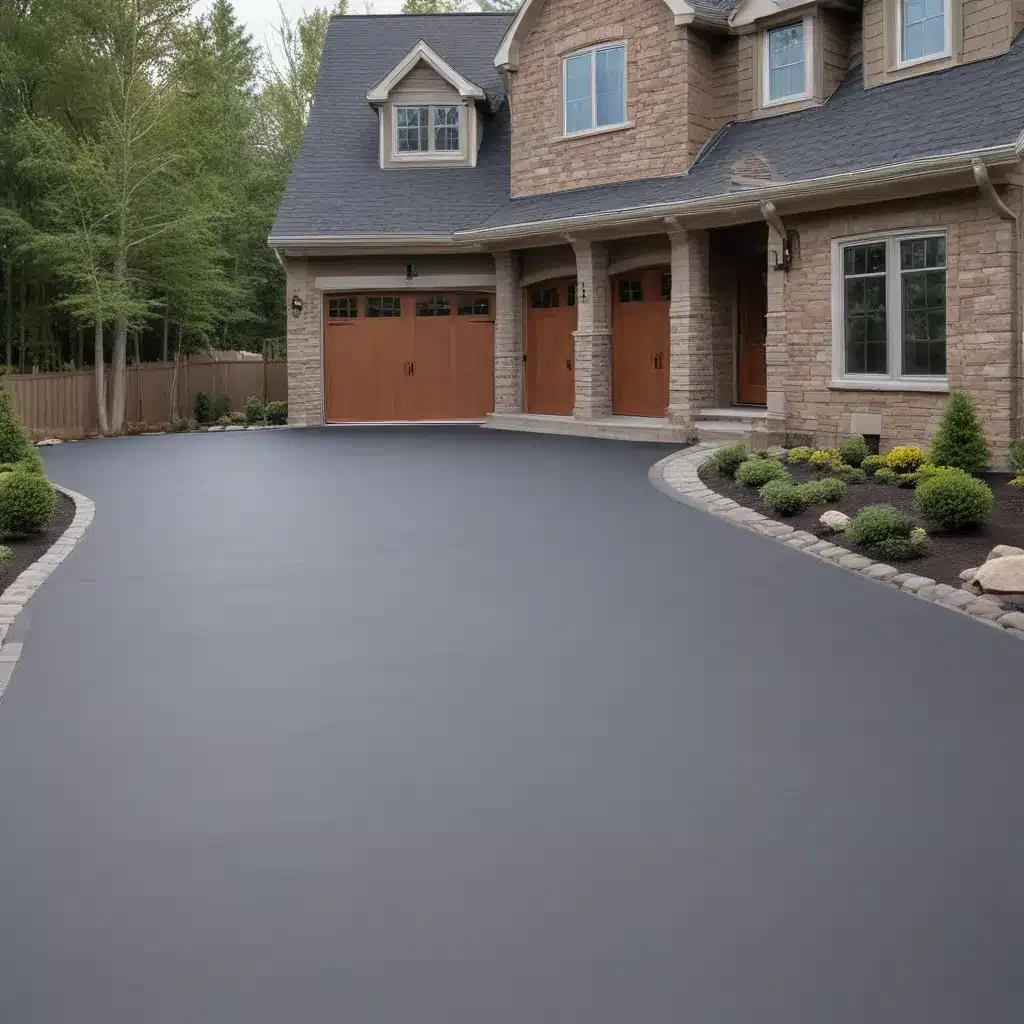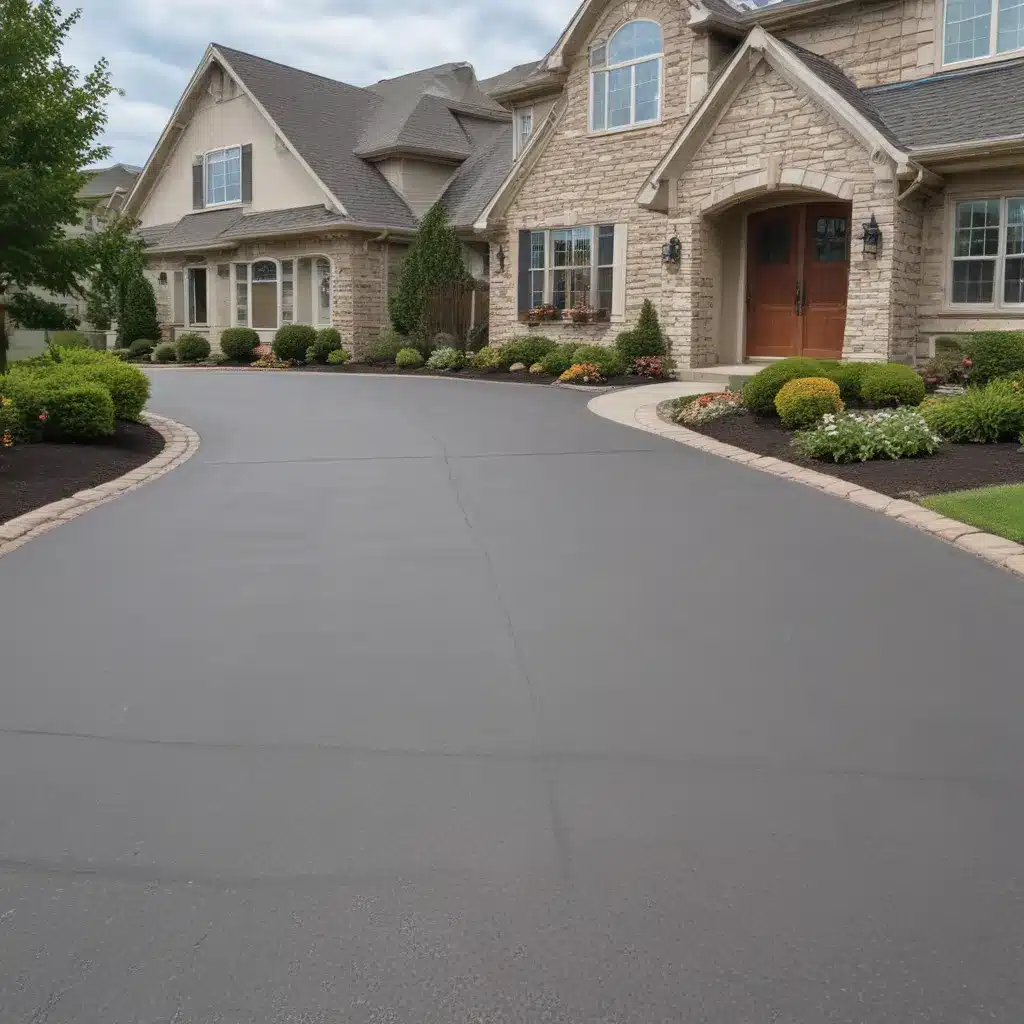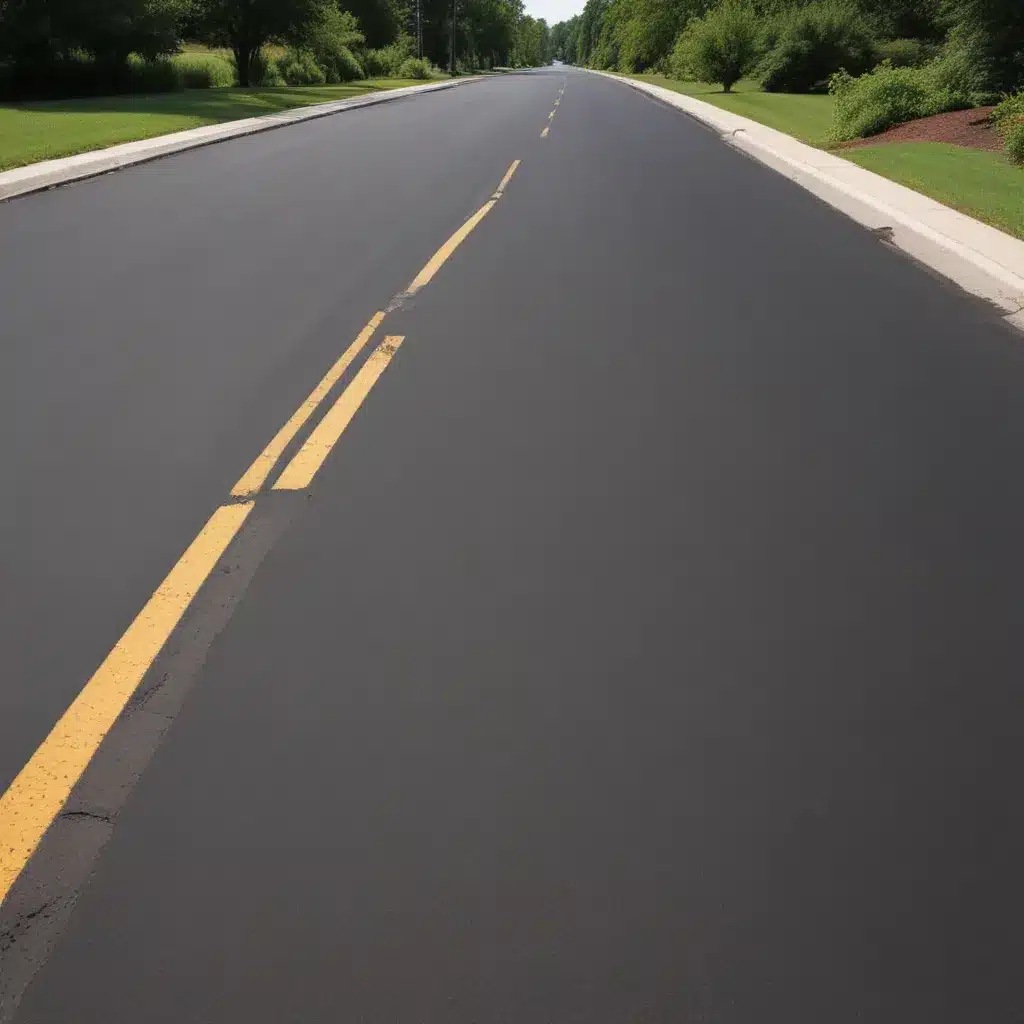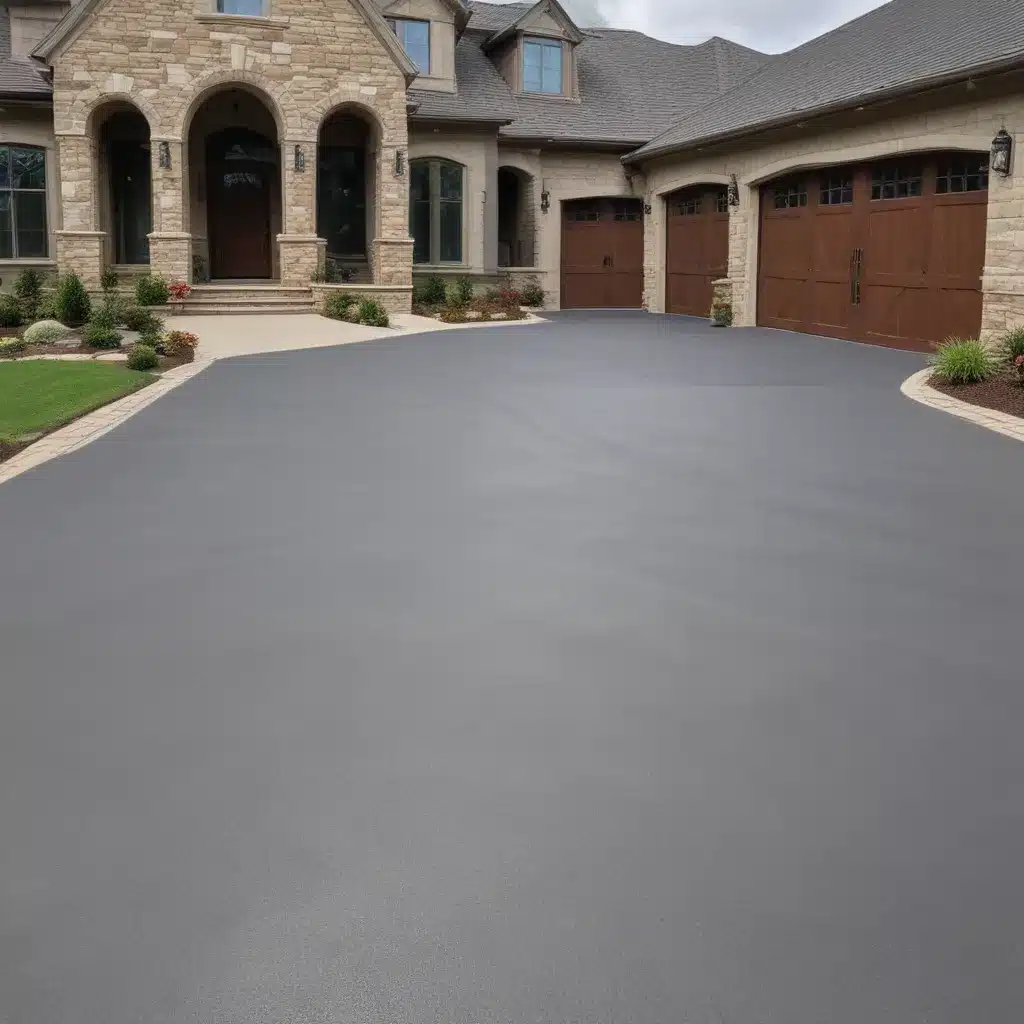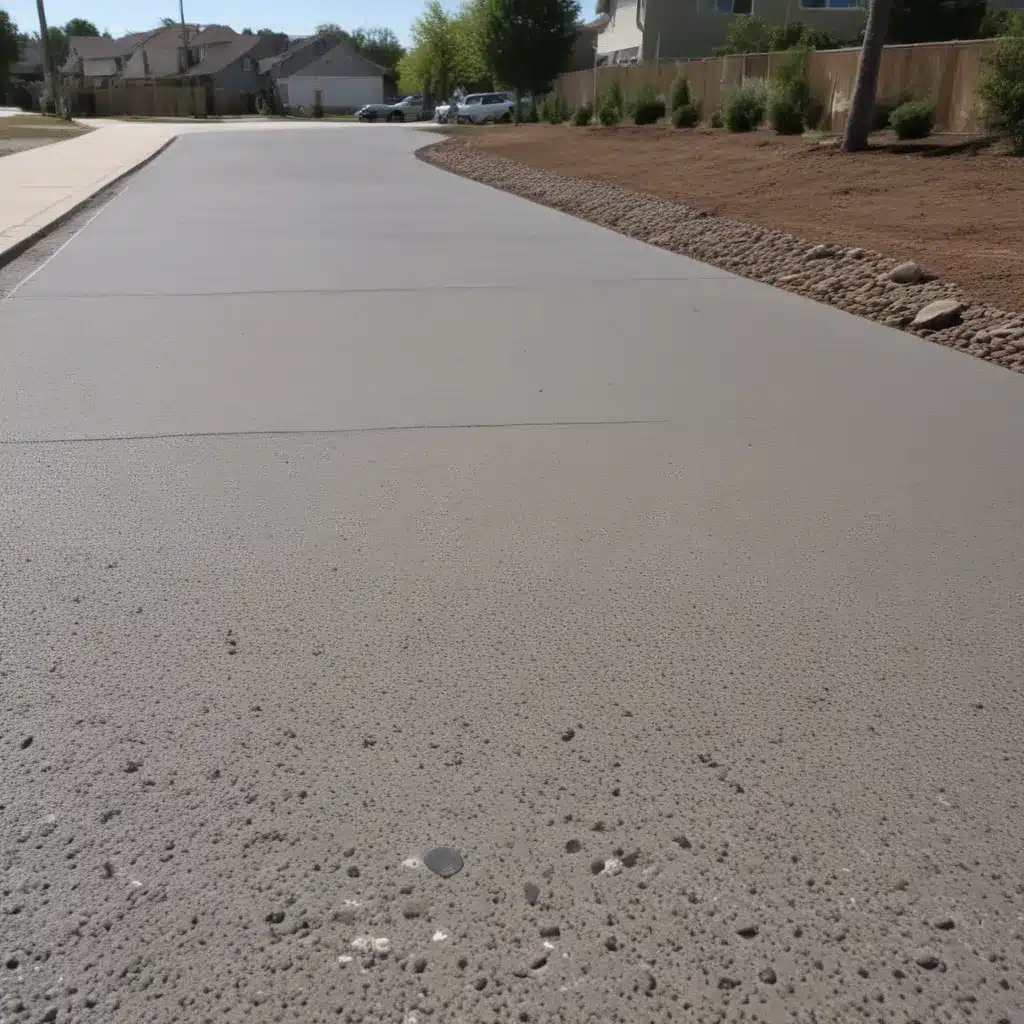The Chilling Reality of Icy Driveways
Ah, the joys of winter – the sparkling snow, the cozy fireplaces, the…treacherous ice-covered driveways? As someone who’s been there, done that (and maybe even slipped on a patch or two), I can attest that dealing with icy driveways is the bane of every homeowner’s existence during the colder months.
I remember one particularly harrowing experience a few winters ago. It was a crisp, clear morning, and I was rushing to get to work on time. Little did I know, Mother Nature had other plans. As I gingerly made my way down the driveway, my feet suddenly shot out from under me, and I found myself doing an impressive impersonation of a newborn giraffe – all flailing limbs and no coordination. Needless to say, I was late to the office that day, not to mention a bit sore. And let’s not even talk about the time I tried to shovel snow off the driveway, only to end up sprawled on the ground, cursing the heavens.
Alas, icy driveways are not just a personal nuisance – they pose a genuine safety hazard for you, your family, and any guests who dare to venture onto your property. That’s why more and more homeowners are turning to heated driveway systems as the ultimate solution to this frosty conundrum.
Toasty Tarmac: The Benefits of Heated Driveways
But what exactly are heated driveway systems, and how do they work? Well, my friends, let me enlighten you. These ingenious setups involve embedding specialized heating elements, usually in the form of electric cables or hydronic tubing, directly into the driveway surface. When activated, these systems generate just the right amount of heat to melt any pesky snow or ice, keeping your driveway clear and safe for all who tread upon it.
And the benefits of such a system are manifold. For starters, it eliminates the need for back-breaking shoveling and the endless cycle of salting and de-icing. No more waking up at the crack of dawn to clear the driveway, only to have it covered in a fresh layer of snow an hour later. With a heated driveway, you can wave goodbye to those frustrating winter mornings and hello to a clear, dry path to your front door.
But the advantages don’t stop there. Heated driveways also enhance the curb appeal of your home, providing a sleek and modern look that’s sure to impress your neighbors (and the delivery person who no longer has to navigate an icy obstacle course to reach your doorstep). And let’s not forget about the safety aspect – no more slipping and sliding, no more potential lawsuits from injured visitors. Your driveway will be as smooth and inviting as a freshly paved runway.
Cozy Concrete: The Science Behind Heated Driveways
Now, I know what you’re thinking: “How do these magical heated driveway systems actually work?” Well, my curious comrades, let me break it down for you.
At the heart of a heated driveway system are the heating elements, which can take the form of either electric cables or hydronic tubing. The electric variety utilizes specialized heating cables that are installed directly into the driveway surface, typically during the construction or resurfacing process. When powered on, these cables generate heat that radiates upward, melting any snow or ice on the surface.
Hydronic systems, on the other hand, employ a network of flexible tubing that’s embedded in the driveway. This tubing carries a heated fluid, usually a water-antifreeze mixture, which circulates throughout the system and transfers its warmth to the driveway surface. The heat source for the hydronic system is typically a boiler or heat pump located elsewhere on the property.
Both electric and hydronic systems are designed with precise temperature controls, allowing you to fine-tune the heat output to match the prevailing weather conditions. This ensures that the driveway is just warm enough to keep it clear, without wasting energy or overheating the surface.
But the science behind heated driveways doesn’t stop there. The materials used in the construction of the driveway itself play a crucial role in the system’s efficiency and effectiveness. Concrete, for example, is an excellent thermal conductor, helping to evenly distribute the heat generated by the embedded elements. Asphalt, on the other hand, can be a bit more finicky, requiring the use of specialized insulating materials to ensure optimal heat transfer.
Customizing Your Cozy Concrete: Heated Driveway Design Considerations
Now, if you’re considering adding a heated driveway to your home, there are a few key design factors to keep in mind. First and foremost, the size and shape of your driveway will play a significant role in the overall system design. Larger driveways, for instance, may require more heating elements or a more powerful heat source to ensure even coverage and consistent temperature.
The layout of the driveway is another important consideration. Curved or irregularly shaped driveways may require a more intricate installation, with the heating elements carefully positioned to ensure that every nook and cranny is adequately warmed. And don’t forget about the surrounding landscaping – trees, shrubs, and other features can impact the heat flow and may need to be factored into the overall design.
But it’s not just the physical characteristics of your driveway that matter. The local climate and weather patterns in your area will also play a crucial role in determining the optimal heated driveway system for your needs. Homeowners in regions with heavy snowfall, for example, may require a more robust system with higher heat output, while those in milder climates might be able to get by with a more modest setup.
And let’s not forget about the all-important question of power source. Will you be tapping into your home’s existing electrical system, or will you need to install a dedicated power supply? And for those who prefer a more eco-friendly approach, there are even heated driveway systems that can be powered by renewable energy sources like solar panels or geothermal heat pumps.
Putting the Pedal to the Metal: Heated Driveway Installation
Alright, so you’ve done your research, you’ve weighed the pros and cons, and you’ve decided that a heated driveway is the way to go. Now comes the fun part: the installation process. And let me tell you, it’s not quite as straightforward as you might think.
First and foremost, you’ll need to enlist the help of a qualified professional – someone with the expertise and experience to ensure that your heated driveway is installed correctly and up to code. These systems require precise placement of the heating elements, meticulous wiring, and careful attention to detail to ensure optimal performance and safety.
But the installation process doesn’t stop there. Depending on the size and complexity of your driveway, the project may also involve excavation, concrete or asphalt work, and the integration of the heating system with your home’s electrical or heating/cooling infrastructure. And let’s not forget about the potential disruption to your daily routine – you’ll likely be looking at several days, if not weeks, of construction and renovation.
Now, I know what you’re thinking: “This all sounds like a huge hassle!” But trust me, the end result is more than worth it. Imagine gliding effortlessly down your driveway, free from the worry of slippery ice or treacherous snow. Imagine the peace of mind that comes with knowing your home is safe and accessible, even in the depths of winter. And let’s not forget about the pure, unadulterated joy of never having to shovel again!
Thawing Out the Competition: Heated Driveway Maintenance and Upkeep
But the journey doesn’t end once your heated driveway is installed and operational. Oh no, my friends – like any other home improvement project, it requires a little bit of TLC to keep it running at its best.
First and foremost, you’ll need to stay on top of the regular maintenance tasks, such as checking the heating elements for any signs of wear or damage, and ensuring that the control system is functioning properly. Depending on the type of system you have, this may involve things like cleaning the hydronic tubing, replacing the antifreeze, or inspecting the electrical connections.
And let’s not forget about the dreaded “winter prep” routine. As the temperatures start to drop and the first snowflakes begin to fall, you’ll need to make sure your heated driveway is ready to do its job. This may involve adjusting the control settings, performing any necessary system tests, and maybe even investing in a backup power source (just in case Mother Nature decides to throw a curveball your way).
But the real key to keeping your heated driveway in tip-top shape? Vigilance, my friends. You’ll need to keep a close eye on the system, monitoring for any changes in performance or efficiency. And don’t be afraid to call in the professionals if you notice any issues – after all, you don’t want to risk a complete system failure in the middle of a blizzard, do you?
The Icy Endgame: Heated Driveway Systems and Home Value
Now, I know what you’re thinking: “Okay, but what’s the big deal? Why should I bother with all this heated driveway business?” Well, my friends, let me tell you – the benefits go far beyond just the convenience and safety of a clear, ice-free driveway.
You see, heated driveway systems can actually be a significant selling point for your home, helping to increase its overall value and appeal to potential buyers. In today’s competitive real estate market, features like these can be the difference between a quick sale and a property that languishes on the market.
Just imagine the scene: a prospective buyer pulls up to your home on a cold, snowy day, only to be greeted by a pristine, snow-free driveway that practically beckons them inside. They’ll be wowed by the sleek, modern look, and they’ll immediately start picturing themselves gliding down that driveway, free from the hassle of shoveling or de-icing.
And let’s not forget about the safety and accessibility factor. In an age where more and more homebuyers are looking for properties that cater to the needs of an aging population, a heated driveway can be a real selling point. Imagine the peace of mind that comes with knowing your elderly relatives or mobility-challenged guests can safely and easily access your home, even in the midst of a winter storm.
So, if you’re considering upgrading your driveway – whether it’s for your own convenience or with an eye towards increasing your home’s resale value – a heated system is definitely worth exploring. It may seem like a bit of an investment upfront, but trust me, the long-term benefits are more than worth it. After all, who doesn’t love the idea of a warm, welcoming driveway that’s always ready to greet you, no matter how cold and icy it might be outside?
The Heated Driveway Difference: Real-Life Success Stories
But enough about the theory and the technicalities – let’s talk about some real-life heated driveway success stories, shall we? Because when it comes to these systems, the proof is in the (melted) pudding.
Take, for instance, the case of our client, Sarah, who lives in a picturesque New England town that’s known for its heavy snowfalls. Sarah had always struggled with her driveway, spending hours each winter shoveling and salting just to keep it passable. That is, until she decided to take the plunge and install a heated driveway system.
“It was the best decision I ever made,” Sarah tells us, her voice brimming with enthusiasm. “I no longer have to worry about slipping and falling on the ice, and I don’t have to waste my weekends shoveling snow. The driveway is always clear and safe, no matter how much the weather throws at us.”
And Sarah’s not the only one singing the praises of heated driveways. Just last month, we had the pleasure of working with the Wilson family, who were looking to update the curb appeal of their suburban home. “We wanted something that would really set our house apart from the rest of the neighborhood,” Mrs. Wilson explains. “And the heated driveway was the perfect solution. Not only does it look amazing, but it’s also so practical and convenient.”
The Wilsons went on to tell us how the heated driveway has become a source of pride and envy among their neighbors. “Whenever it snows, we just sit back and watch as everyone else struggles to clear their driveways, while ours stays perfectly clear. It’s like having our own private runway, right in our front yard!”
So, if you’re still on the fence about investing in a heated driveway system, maybe these real-life success stories will help sway you. After all, who doesn’t want the peace of mind and the bragging rights that come with a driveway that’s always ready to welcome you home, no matter what Mother Nature has in store?
Conclusion: Embracing the Warmth of a Heated Driveway
Well, my friends, I think we’ve covered just about everything there is to know about heated driveway systems – from the science behind them to the practical benefits they offer. And if you ask me, the choice is clear: if you want to say goodbye to the endless winter woes of icy driveways, a heated system is the way to go.
Sure, the initial investment might be a bit steep, but trust me, the long-term payoff is more than worth it. No more back-breaking shoveling, no more slipping and sliding, no more worrying about the safety of your family and guests. Just a smooth, inviting driveway that’s always ready to welcome you home, no matter how cold and snowy it might be outside.
And let’s not forget about the added bonus of increased home value. In today’s competitive real estate market, features like these can be the difference between a quick sale and a property that languishes on the market. So, if you’re thinking of putting your home on the market in the future, a heated driveway could be the key to securing a top-dollar offer.
So, what are you waiting for? Embrace the warmth and convenience of a heated driveway system, and say goodbye to the icy woes of winter once and for all. Your back and your peace of mind will thank you!

